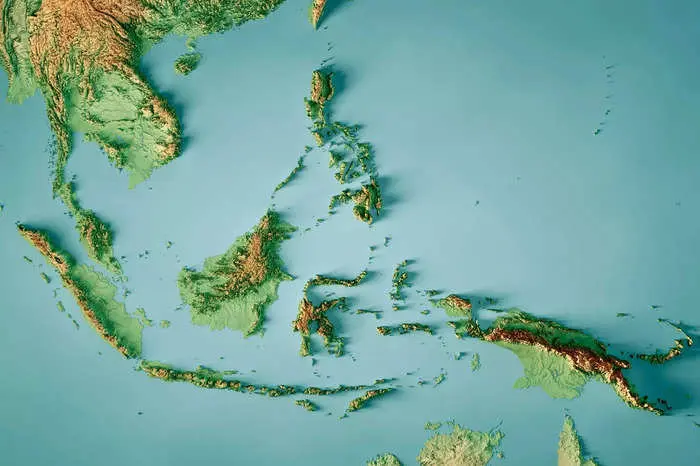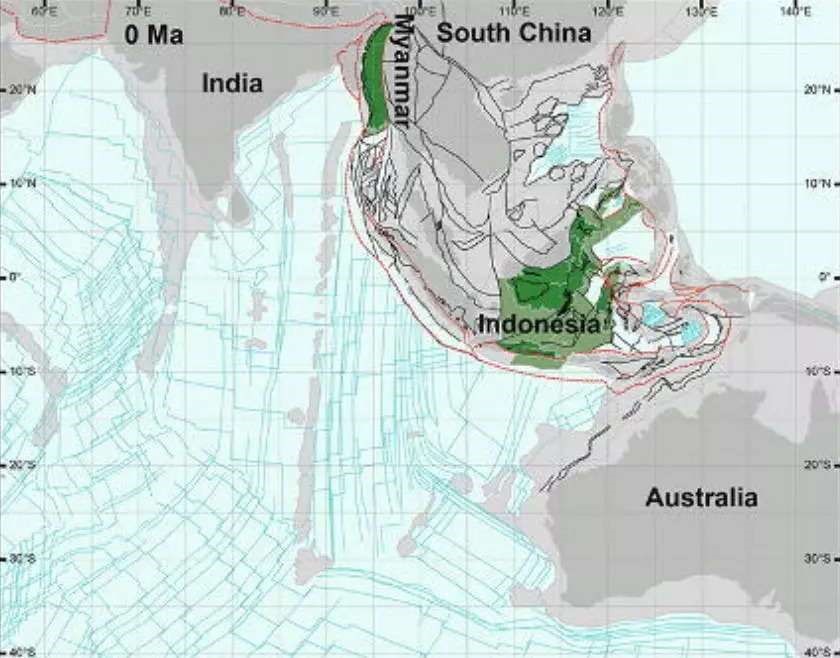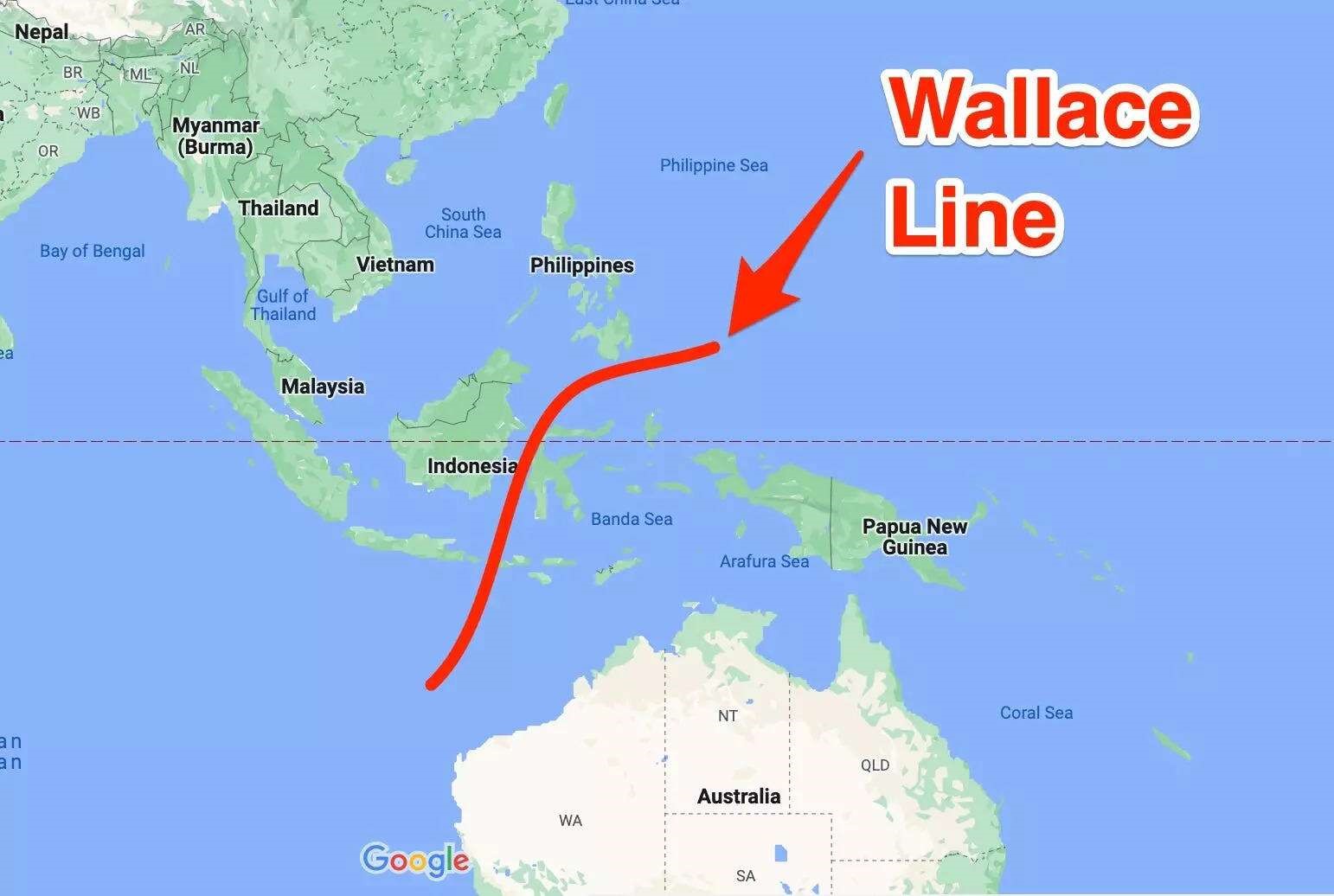Description

Disclaimer: Copyright infringement not intended.
Context
- A chunk of land that broke off from Australia 155 million years ago seemed to have vanished.
- Seven years of research helped scientists trace the landmass back to Southeast Asia.
About
- It was a long-lost continent that split from northwestern Australia 155 million years ago.
- The enigmatic 3,106-mile span was once a component of the supercontinent Gondwana.
- It crumbled when tectonic pressures stretched it out and drove it away from the rest of the continent, spreading it over Southeast Asia.
- It had first moved northwest, where several Southeast Asian islands now exist.
- However, unlike India, which separated from the ancient supercontinent Gondwana 120 million years ago and remains a single landmass today, Argoland fragmented into fragments.
- Because these fragments arrived at their destinations at the same time, they produced an archipelago rather than a cohesive landmass.
- Argoland, which is currently distributed as an archipelago divided by ocean basins, helped to construct various Southeast Asian islands.
Key Facts about Gondwana:
- From around 550 million years ago until approximately 180 million years ago, Gondwana coexisted with Laurasia as a supercontinent.
- Africa, South America, Australia, Antarctica, the Indian Subcontinent, and the Arabian Peninsula finally separated from the continent.
News Summary

- The continent of Argoland, which seemingly vanished after splitting from Australia 155 million years ago, has finally been discovered.
- Continental splits usually leave traces in ancient fossils, rocks, and mountain ranges. But up until now, scientists had been unable to find where Argoland had ended up.
- Now researchers at Utrecht University in the Netherlands think they have uncovered the mysterious landmass, hidden under the eastern islands of Southeast Asia.
- The discovery could help explain something known as the Wallace line, which is an imaginary boundary that separates Southeast Asian and Australian fauna.
- It took some careful detective work to find where Argoland had gone after breaking off from what would become Australia. Scientists had found bits of "ribbon continents" around South East Asia, but could not piece them back together.
- Wallace Line: A barrier that divides marsupials and tigers in Southeast Asia.

Details About Tectonic Plates
- Plate tectonics is a scientific theory that explains how major landforms are created as a result of Earth’s subterranean movements.
- The theory, which solidified in the 1960s, transformed the earth sciences by explaining many phenomena, including mountain-building events, volcanoes, and earthquakes.
- In plate tectonics, Earth’s outermost layer, or lithosphere made up of the crust and upper mantle is broken into large rocky plates.
- These plates lie on top of a partially molten layer of rock called the asthenosphere.
- Due to the convection of the asthenosphere and lithosphere, the plates move relative to each other at different rates, from two to 15 centimeters (one to six inches) per year.
- This interaction of tectonic plates is responsible for many different geological formations such as the Himalayan Mountain range in Asia, the East African Rift, and the San Andreas Fault in California, United States.
Continental Drift Theory
- The idea that continents moved over time had been proposed before the 20th century.
- However, a German scientist named Alfred Wegener changed the scientific debate.
- Wegener published two articles about a concept called continental drift in 1912.
- He suggested that 200 million years ago, a supercontinent he called Pangaea began to break into pieces, its parts moving away from one another.
- The continents we see today are fragments of that supercontinent.
- To support his theory, Wegener pointed to matching rock formations and similar fossils in Brazil and West Africa.
- In addition, South America and Africa looked like they could fit together like puzzle pieces.
Types of Plates
- There are primarily seven major tectonic plates: the African Plate, Antarctic Plate, Eurasian Plate, North American Plate, South American Plate, Pacific Plate, and Indo-Australian Plate. Additionally, there are several minor plates and microplates.
Plate Boundaries
- Tectonic plate boundaries are the regions where these plates interact, leading to various geological phenomena. There are four main types of plate boundaries:
- Divergent boundaries, where plates move away from each other.
- Convergent boundaries, where plates move toward each other and collide.
- Transform boundaries, where plates slide horizontally past each other.
- Plate boundary zones, where multiple interactions occur, leading to complex geological processes.
Geological Phenomena
Tectonic plate movements give rise to several geological phenomena, including:
- Earthquakes: Sudden release of energy along plate boundaries or faults.
- Volcanic activity: Eruptions at subduction zones and divergent boundaries.
- Mountain formation: Collision of plates leads to the uplift of mountain ranges.
- Rift valleys: Divergent boundaries create rifts and rift valleys.
Driving Mechanisms
Plate tectonics is primarily driven by two mechanisms:
- Ridge push: The force generated by the elevated mid-ocean ridges that push plates apart.
- Slab pull: The gravitational force that pulls a subducting plate into the mantle.

Conclusion
- Plate tectonics research is vital because it helps us comprehend the structure and movement of the Earth's lithosphere, or solid outer layer.
- Mountain formation, earthquakes, volcanic activity, and the building of new oceanic and continental crust are all examples of this.
- We may learn about the Earth's past and how it has evolved over time by understanding plate tectonics, as well as making predictions about future changes.
- Furthermore, plate tectonics influences the Earth's climate, ocean currents, and the distribution of life on our planet.
- In brief, plate tectonics is an important component of comprehending our planet as a whole, and it is required for many fields of study such as geology, earth science, and environmental science.
|
PRACTICE QUESTION
The Continental Drift Theory proposed by Alfred Wegener revolutionized our understanding of Earth's geological history. Discuss the key principles of the Continental Drift Theory and its impact on the field of geology.
|













